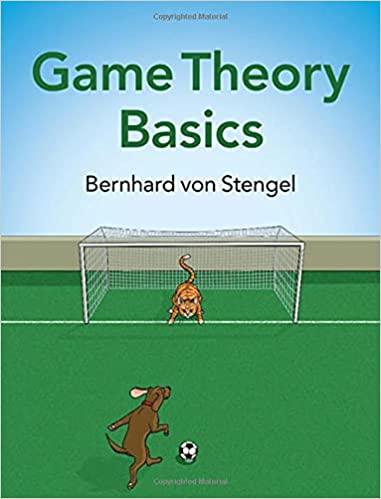Consider a game (G) in strategic form. Recall that the commitment game derived from (G) is defined
Question:
Consider a game \(G\) in strategic form. Recall that the commitment game derived from \(G\) is defined by letting player I choose one of his strategies \(x\), which is then announced to player II, who can then in each case choose one of her strategies in \(G\) as a response to \(x\). The resulting payoffs are as in the original game \(G\).
(a) If \(G\) is an \(m \times n\) game, how many strategies do player I and player II have, respectively, in the commitment game?
For each of the following statements, determine whether they are true or false; justify your answer by a short argument or counterexample.
(b) In an SPE of the commitment game, player I never commits to a strategy that is strictly dominated in \(G\).
(c) In an SPE of the commitment game, player II never chooses a move that is a strictly dominated strategy in \(G\).
Step by Step Answer:






